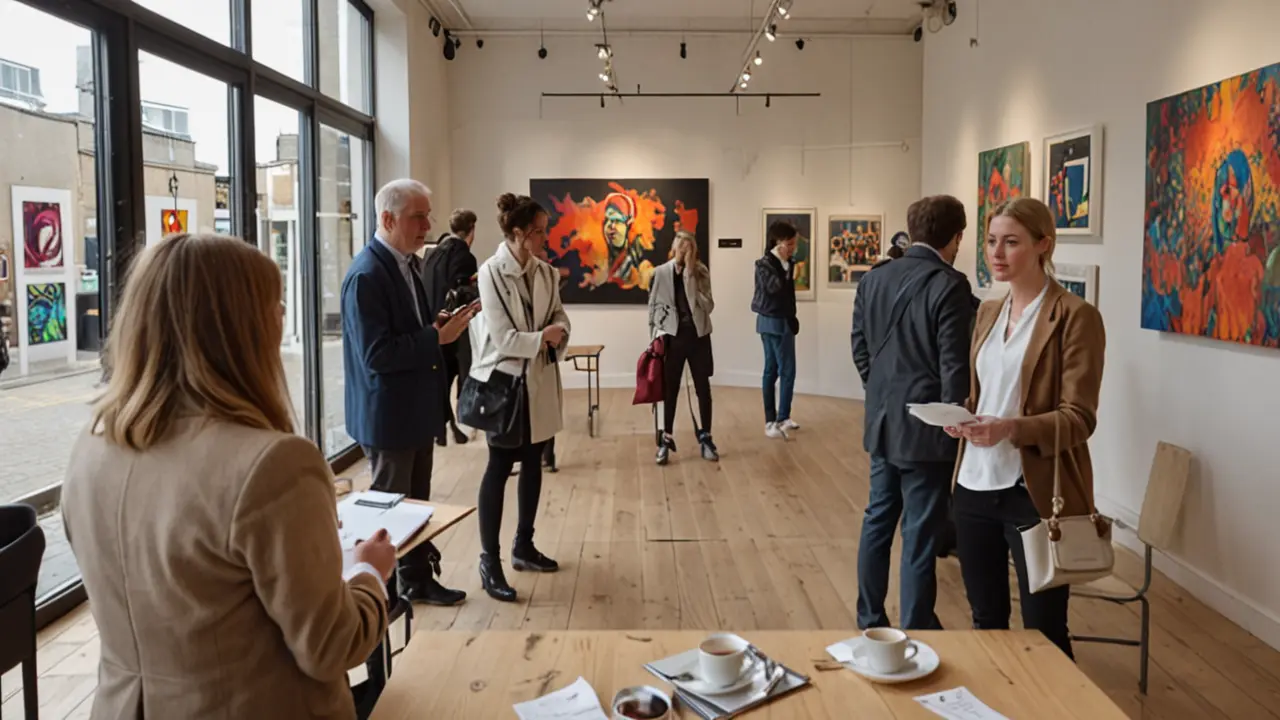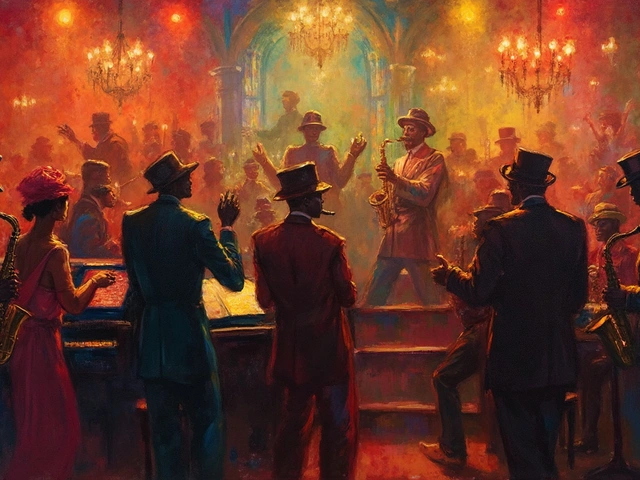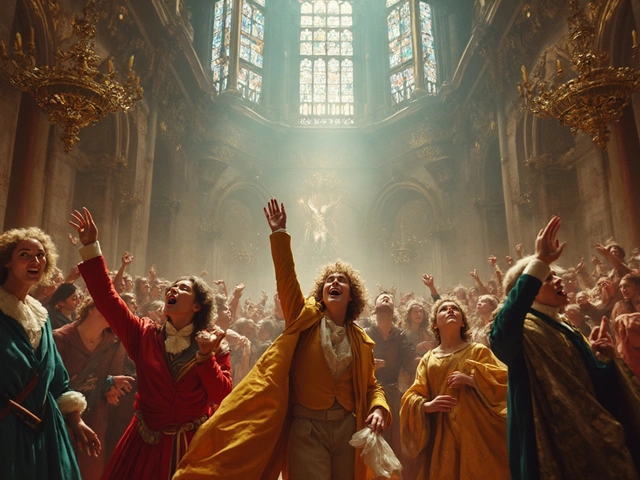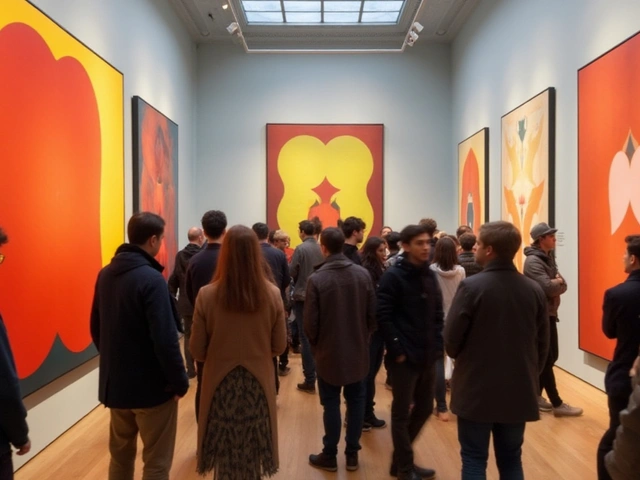Diving into modern art for the first time can feel like stepping into a strange and confusing world. With so many different styles, techniques, and movements, it’s easy to feel overwhelmed.
However, there are certain strategies that can help make this journey exciting and engaging. Understanding the basics of what modern art encompasses is a good place to start. Knowing a few key artists and styles can also serve as a useful guide.
In this article, we'll explore the foundations of modern art, introduce important artists, highlight notable art movements, and provide tips for both visiting galleries and starting your own collection.
- Understanding Modern Art
- Famous Modern Artists to Know
- Popular Modern Art Styles and Movements
- Tips for Visiting Modern Art Galleries
- Starting Your Modern Art Collection
Understanding Modern Art
Modern art is a vast and varied field, often embodying the spirit of innovation and rebellion against traditional techniques and subjects. Originating in the late 19th century, modern art has grown to encompass a wide range of styles and movements, each offering fresh perspectives on what art can be. Contrary to classical art, which focused on realistic portrayals, modern art experiments with abstraction, symbolism, and unconventional materials.
One of the first things to grasp is the idea that modern art isn’t just about aesthetics; it often seeks to challenge preconceptions and provoke thought. This shift in focus from pure representation to the expression of ideas can be seen in works by iconic artists such as Pablo Picasso, whose piece “Les Demoiselles d'Avignon” broke away from traditional perspective and form.
Impressionism marked the beginning of the modern art era, with artists like Claude Monet emphasizing light and color over precise detail. This movement paved the way for others, including Fauvism, Cubism, and Surrealism. Fauvism, led by Henri Matisse, used bold colors to evoke emotional responses, while Cubism, co-founded by Picasso, fragmented objects into abstract forms.
Modern art also saw the rise of movements such as Dadaism and Surrealism, which sought to disrupt conventional norms. Dadaist artists like Marcel Duchamp used satire and absurdity to question the definitions of art. Surrealism, on the other hand, delved into the unconscious mind, with Salvador Dalí creating dream-like, bizarre landscapes.
Understanding modern art also means recognizing its social and political dimensions. Many artists used their work to comment on world events and societal issues. For example, Frida Kahlo's powerful paintings often explored themes of identity, postcolonialism, and gender.
“The purpose of art is washing the dust of daily life off our souls.” ― Pablo Picasso
When approaching modern art, try to view it not only as an aesthetic experience but also as a dialogue with its time and place. Exhibitions and galleries often provide context that can help. Audio guides, curated tours, and wall texts offer insights into the story behind a piece. Ask yourself: what was happening in the world when this piece was created?
To ease into modern art, consider learning about key movements and their main contributors. It's helpful to study the styles and philosophies that shaped each era. For beginners, visiting a local gallery or museum can be a fantastic opportunity to see these artworks firsthand. Armed with a bit of background knowledge, you'll find that modern art holds a wealth of fascinating stories waiting to be discovered.
Famous Modern Artists to Know
When it comes to modern art, several artists have significantly influenced the style and movement, making their work essential for any beginner. One such artist is Pablo Picasso. Renowned for co-founding the Cubist movement, Picasso's work spans paintings, sculptures, drawings, ceramics, and prints. He continually reinvented his style, making him a quintessential figure in modern art history. His painting, Les Demoiselles d'Avignon, remains one of his most famous works and a pivotal piece in modern art.
"The purpose of art is washing the dust of daily life off our souls." — Pablo Picasso
Jackson Pollock is another name that stands out. Known for pioneering the drip painting technique, Pollock's work is synonymous with the abstract expressionist movement. His dynamic, almost chaotic paintings, such as Autumn Rhythm (Number 30), capture motion and emotion in a raw, unrestrained form, making them both compelling and polarizing.
Moving on from abstract expressionism, we can't ignore Andy Warhol. The leading figure of the pop art movement, Warhol's works often feature vibrant colors and repeated patterns. His Campbell's Soup Cans series and portraits of celebrities like Marilyn Monroe challenge the norms of traditional art by blending commercialism and artistic expression. Warhol famously said,
"In the future, everyone will be world-famous for 15 minutes."
Henri Matisse, a French artist known for his use of color and fluid draughtsmanship, was a leader of the Fauvist movement. His work, including masterpieces like The Dance and Woman with a Hat, emphasizes pure, expressive lines and bold colors. His cut-out technique later in his career also remains influential in modern art.
Frida Kahlo, famous for her intense and poignant self-portraits, stands out as a crucial female figure in modern art. Her work often deals with pain, passion, and identity, reflecting her personal struggles and cultural heritage. Paintings such as The Two Fridas and Self-Portrait with Thorn Necklace and Hummingbird remain iconic and widely studied.
Understanding the work of these artists can provide a solid foundation for appreciating and exploring modern art. Their distinct styles and contributions have collectively shaped the diverse and dynamic world of contemporary artistic expression.

Popular Modern Art Styles and Movements
Exploring modern art styles and movements can be a thrilling adventure, offering a glimpse into the diverse ways artists express themselves. One significant movement you should know is Abstract Expressionism. Emerging in the 1940s in New York, this style focuses on spontaneous, automatic, or subconscious creation. Artists like Jackson Pollock and Mark Rothko are giants in this genre. Pollock's dripping technique, creating intricate webs of paint, became iconic, while Rothko's deep, contemplative color fields invite viewers to explore the emotional power of color.
Next, let's talk about Pop Art, which began in the 1950s and reached its peak in the 1960s. It challenged traditional fine art by incorporating imagery from popular and mass culture. Think of Andy Warhol’s Campbell’s Soup Cans or Roy Lichtenstein’s comic strip-style paintings. This movement made art more accessible by celebrating everyday objects and commercial art forms, often using bold colors and ironic twists.
Another fascinating style is Surrealism, which started in the 1920s. Surrealist artists aimed to unlock the unconscious mind, creating dream-like scenes filled with shocking, illogical, or fantastical elements. Salvador Dalí’s melting clocks in “The Persistence of Memory” and René Magritte’s mysterious “The Son of Man” are prime examples of Surrealism's imaginative power.
Minimalism, which gained momentum in the 1960s, focuses on simplicity and objectivity. Minimalist artists like Donald Judd and Agnes Martin favored clean lines, geometric shapes, and limited color palettes. This movement emphasized the idea that art should have its own reality, not an imitation of something else. It invites viewers to appreciate the purity and beauty of the artwork itself.
One of the later movements worth noting is Conceptual Art, emerging in the 1960s. This style emphasizes ideas over visual form. The concept behind the work takes precedence over traditional aesthetic and material concerns. Famous conceptual artist Sol LeWitt succinctly put it, “The idea becomes a machine that makes the art.”
Art critic and historian Lucy Lippard once said, "Conceptual art is made to engage the mind of the viewer, rather than his eye or emotions."
Another less traditional, but equally impactful style is Street Art. This movement grew from graffiti culture and is known for its ephemeral nature, often challenging societal norms. Banksy is arguably the most famous street artist, known for his provocative and subversive pieces that pop up in urban landscapes worldwide.
With these modern art styles and movements in mind, you can begin to identify what resonates with you. Each style offers a different lens through which to view the world, opening up new possibilities for how art can be experienced and understood. Whether you are drawn to the chaotic expressiveness of Abstract Expressionism or the austere beauty of Minimalism, modern art has something to offer everyone.
Tips for Visiting Modern Art Galleries
Visiting modern art galleries can be an eye-opening experience, but it can also be slightly intimidating if you don’t know where to begin. Here's how to make the most of your visit and enhance your appreciation of modern art.
First, research the gallery you plan to visit. Familiarizing yourself with its collection, the type of art it exhibits, and any current or upcoming exhibitions can provide context and deepen your understanding. Look up articles or reviews to gather insights on the most talked-about pieces or exhibitions.
Utilize any available resources. Many galleries offer free guided tours, which can provide valuable information about the artists and their works. Audio guides are also a great option, as they allow you to explore the gallery at your own pace while listening to detailed descriptions and interesting facts about the pieces on display.
Take your time with each artwork. Modern art often involves complex themes and ideas that require careful consideration. Spend at least a few minutes observing each piece, noting your initial reactions and any questions that arise. Remember, it’s not about understanding everything immediately but about engaging with the art and allowing it to provoke thought.
Don’t be afraid to ask questions. Gallery staff and docents are usually very knowledgeable and passionate about the art on display. Whether you have a simple question about a piece or need a more in-depth explanation, these experts can provide valuable insights and enhance your learning experience.
Consider visiting galleries during off-peak hours. Weekdays and early mornings are generally less crowded, allowing for a more peaceful and personal experience. This can help you focus better and connect with the art without the distraction of large crowds.
Bring along a notebook or use your phone to jot down any thoughts, questions, or feelings that come up as you view the artworks. This practice can help you reflect on your experience later and is a great way to document your art journey.
Participate in gallery events and workshops. Many galleries host talks, panel discussions, and art classes that provide deeper insights into modern art and its contextual background. These events are often led by experts and provide an opportunity to engage with the art community.
Follow your curiosity and intuition. If a particular piece catches your eye, spend more time with it, even if you can’t immediately articulate why. Your personal reactions and emotions are a significant part of the experience, and giving them space is crucial.
"Art is not what you see, but what you make others see." — Edgar DegasEngaging with modern art is an evolving process, one that requires open-mindedness and a willingness to explore. Happy gallery visits!

Starting Your Modern Art Collection
Starting a modern art collection can be both thrilling and daunting, especially for beginners. The first step is to educate yourself about the various art movements, styles, and artists that resonate with you. This knowledge will not only sharpen your eye but also help you appreciate the nuances of modern art. Visit local galleries, museums, and art fairs to get a feel for different styles and mediums. While some pieces might seem puzzling at first, spending time with the art and learning about its context can make it more accessible.
One of the keys to building an impressive collection is personal taste. Since modern art is so diverse, there's no right or wrong choice. Go for pieces that speak to you, that evoke emotion or spark curiosity. It's essential to trust your instincts while also being open to new experiences. Keep in mind that the value of art isn't always monetary; it can also be emotional and educational.
When you're ready to purchase, start small. Limited edition prints, sketches, and works on paper are more affordable than large original paintings or sculptures. They can also provide a good entry point into the art market. Online platforms like Artsy or Saatchi Art offer a plethora of options, including works by emerging artists. Supporting upcoming talent can be a fulfilling way to begin your collection and sometimes an investment, as their work might appreciate in value.
It's crucial to set a budget and stick to it. Art buying can be addictive, and it's easy to get carried away. Always do your research before making a purchase. Check the artist's credentials, exhibition history, and past auction results. Provenance, or the history of ownership, can also affect the value and authenticity of a piece. Don't shy away from asking questions or seeking expert advice. Many galleries and auction houses provide consultation services to guide new collectors.
“Collecting art is an investment in the imagination and the heart. Start with what you love, and educate yourself along the way,” shares renowned art curator, Agnes Gund.Proper care and storage are vital to maintaining the condition and value of your collection. Protect works on paper from light exposure and consider climate control for more delicate pieces. Framing isn't just about presentation; it's also about preservation. Choose archival-quality materials to ensure the longevity of your art.
Networking with other collectors and industry professionals can be highly beneficial. Join art clubs, attend gallery openings, and participate in online forums. Building relationships within the art community will provide insights and possibly even opportunities to acquire coveted pieces.
Insurance and Documentation
Once your collection starts to grow, consider investing in insurance. Art can be a significant financial asset, and protecting it against theft, damage, or loss is wise. Detailed documentation is also important. Keep records of purchase receipts, provenance, artist bios, and any other relevant information. This not only helps in tracking the value of your collection but also simplifies matters if you ever decide to sell or donate pieces.| Step | Task |
|---|---|
| 1 | Educate yourself about modern art movements and artists |
| 2 | Visit galleries and museums to explore different styles |
| 3 | Start purchasing affordable art, such as prints and sketches |
| 4 | Set a realistic budget and research before buying |
| 5 | Maintain proper care and storage for your art |
Starting your modern art collection is a journey of discovery and passion. It's about finding pieces that not only beautify your space but also enrich your life. Take your time, enjoy the process, and let your collection reflect your individual tastes and experiences.




